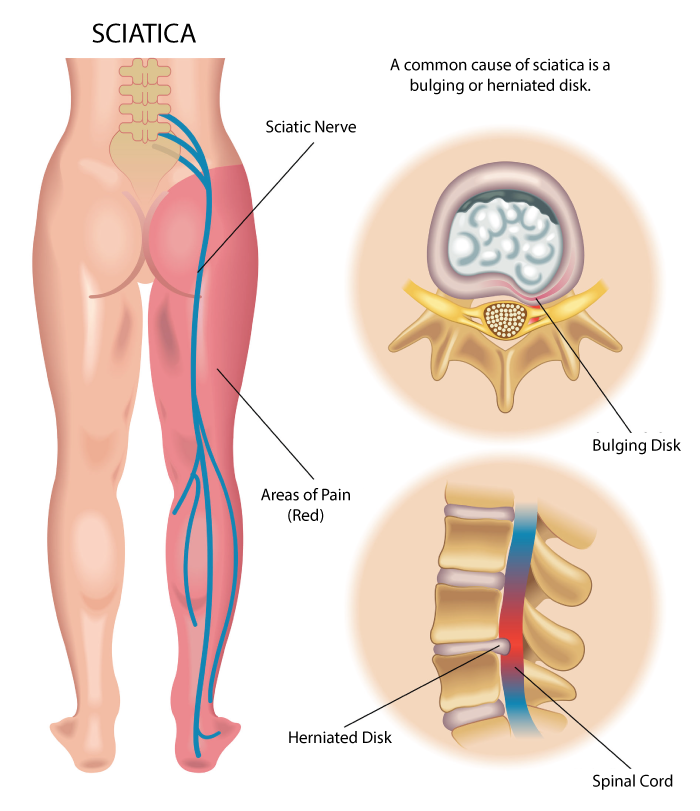Sciatica
What is Sciatica?
The term "sciatica" describes persistent pain felt along the sciatic nerve, which runs from the lower back, down through the buttock, and into the lower leg. The sciatic nerve controls the muscles of the lower leg and provides sensation to the thighs, legs, and the soles of the feet.
Sciatica is actually a set of symptoms—not a diagnosis for what is irritating the nerve root and causing the pain. Many conditions can cause the symptoms of sciatica, and only a trained professional can determine why the pain is occurring and create a proper treatment plan for your specific needs.
Sciatica occurs most frequently in people between the ages of 30 and 50 years old.
Common causes of sciatica include disk bulges and herniations, as well as muscular impingement (piriformis syndrome).
Symptoms of Sciatica
Most Common Symptom
• Pain that radiates from the lower back and down one leg.
Other Possible Symptoms
• A mild tingling, dull ache, or burning sensation, typically on one side of the body.
• A pins-and-needles sensation, most often in the toes or foot.
• Numbness or muscle weakness in the affected leg or foot.
Pain is Worsened By
• Prolonged sitting
• Sneezing & coughing
• Bending
• Sudden movements
Pain from sciatica often begins slowly, gradually intensifying over time.

How Sciatica is Diagnosed
Your doctor will begin your appointment by taking a complete patient history, followed by both a physical and a neurological examination. Special attention will be focused on your spine and legs, and you may perform some movements that will test your sensory and muscle strength, as well as your reflexes. For example, you may be asked to lie on an examination table and lift your legs straight in the air, one at a time.
In some cases, your doctor may recommend diagnostic imaging, such as x-ray or MRI, to rule out a more serious condition. Imaging may also be used when patients with severe symptoms fail to respond to conservative treatment within a time frame that the doctor is comfortable with.
Treatment for Sciatica
For most people, sciatica responds very well to conservative care, including chiropractic. Keeping in mind that sciatica is a symptom and not a stand-alone medical condition, treatment plans will often vary depending on the underlying cause of the problem.
Chiropractic offers a non-invasive (non-surgical), drug-free treatment option. The goal of chiropractic care is to restore spinal movement, thereby improving function while decreasing pain and inflammation. Depending on the cause of the sciatica, a chiropractic treatment plan may cover several different treatment methods, including but not limited to spinal adjustments, ice/heat therapy, ultrasound, electrical muscle stimulation, and rehabilitative exercises.

